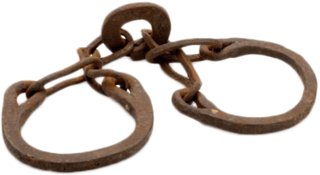 W
WSerfdom was the status of many peasants under feudalism, specifically relating to manorialism, and similar systems. It was a condition of debt bondage and indentured servitude with similarities to and differences from slavery, which developed during the Late Antiquity and Early Middle Ages in Europe and lasted in some countries until the mid-19th century.
 W
WThe Emancipation Reform of 1861 in Russia, also known as the Emancipation Edict of Russia, was the first and most important of the liberal reforms passed during the reign (1855–1881) of Emperor Alexander II of Russia. The reform effectively abolished serfdom throughout the Russian Empire.
 W
WSaint George's Day is one of two feasts of Saint George, celebrated by the Russian Orthodox Church, the Serbian Orthodox Church, and the Georgian Orthodox Church, the other being Saint George's Day of Spring.
 W
WLike slavery, serfdom has a long history that dates to ancient times.
 W
WThe Liber Paradisus is a law text promulgated in 1256 by the Commune of Bologna which proclaimed the abolition of slavery and the release of serfs.
 W
WThe Proclamation of Połaniec, issued on 7 May 1794 by Tadeusz Kościuszko near the town of Połaniec, was one of the most notable events of Poland's Kościuszko Uprising, and the most famous legal act of the Uprising. It partially abolished serfdom in Poland, granting substantial civil liberties to all the peasants. The motives behind the Połaniec Proclamation were twofold: first, Kosciuszko, a liberal and reformer, believed that serfdom was an unfair system and should be ended; second, the uprising was in desperate need of recruits, and freeing the peasants would prompt many to enlist.
 W
WThe term "serf", in the sense of an unfree peasant of tsarist Russia, is the usual English-language translation of krepostnoy krest'yanin which meant an unfree person who, unlike a slave, historically could be sold only with the land to which he or she was "attached". Emperor Peter I ended slavery in Russia in 1723. Contemporary legal documents, such as Russkaya Pravda, distinguished several degrees of feudal dependency of peasants.
 W
WSerfdom in Poland became the dominant form of relationship between peasants and nobility in the 17th century, and was a major feature of the economy of the Polish–Lithuanian Commonwealth, although its origins can be traced back to the 12th century.
 W
WA villein, otherwise known as cottar or crofter, is a serf tied to the land in the feudal system. Villeins had more rights and social status than those in slavery, but were under a number of legal restrictions which differentiated them from the freeman.